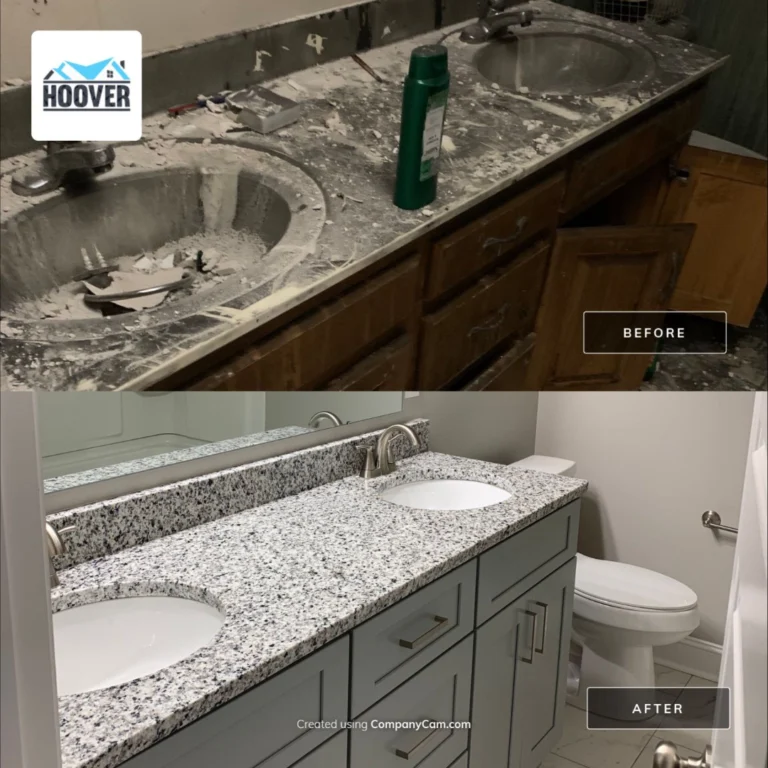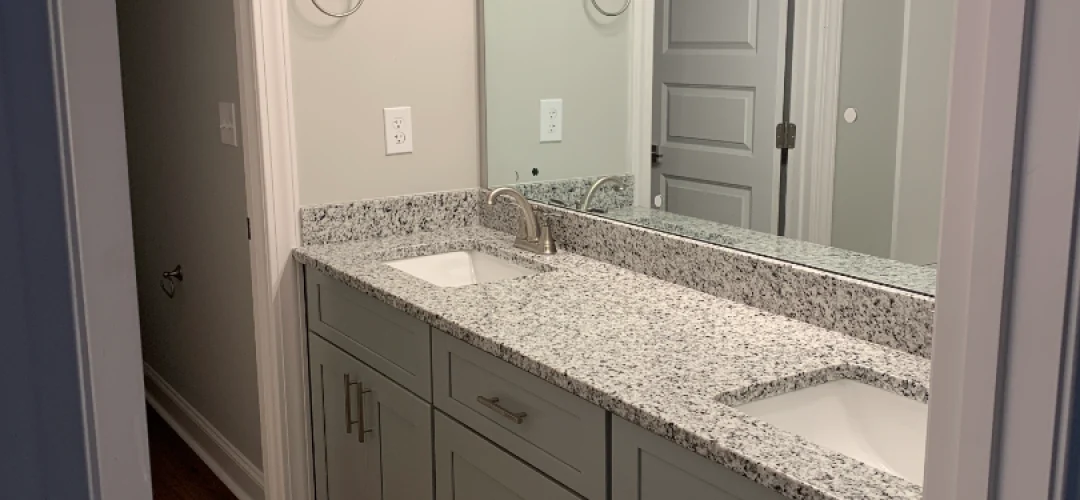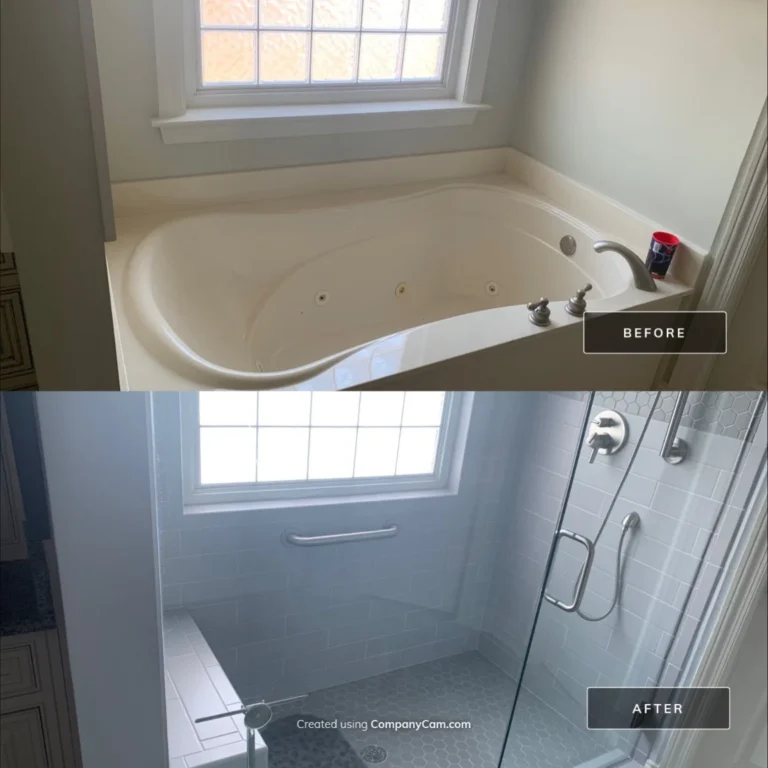Remodeling a bathroom is one of the most impactful home improvement projects you can undertake. Whether you’re updating a dated look, improving functionality, or increasing your home’s value, a bathroom remodel can bring both aesthetic and practical benefits. However, before you start tearing out tiles or shopping for fixtures, there are several key factors to consider. This guide outlines everything you need to know before starting your bathroom remodel.
1. Set a Realistic Budget
Before anything else, define your budget. Bathroom remodels can vary widely in cost, depending on factors such as the size of the space, the quality of materials, and the extent of the renovation. Be sure to include a buffer (typically 10-20%) for unexpected expenses. Costs can add up quickly, so it’s crucial to determine what you’re willing and able to spend from the start.
Start by itemizing potential expenses such as plumbing, electrical work, fixtures, cabinetry, flooring, lighting, and labor. Consider using a budget planning tool or spreadsheet to track estimates and actual costs. Don’t forget to factor in the cost of permits and possible lodging if your bathroom will be out of commission for an extended time. Setting a detailed, realistic budget helps prevent financial surprises and keeps the project on track.

2. Define Your Goals
What do you want to achieve with your remodel? Are you aiming for a complete overhaul or just cosmetic updates? Defining your goals early will help guide your decisions on design, materials, and labor. Common goals include:
- Increasing storage
- Improving lighting
- Upgrading outdated fixtures
- Enhancing accessibility
- Creating a spa-like atmosphere
Think about your daily routine and how your current bathroom helps or hinders it. Are you always short on counter space? Is the lighting poor during your morning shave or makeup routine? Clarifying your functional goals will help inform everything from layout to lighting. A clear vision also improves communication with contractors and designers.
3. Plan the Layout
Think carefully about the layout of your bathroom. Maintaining the existing plumbing layout can significantly reduce costs, but if the current configuration isn’t functional, it may be worth the investment to make changes. Consider the placement of the shower, tub, toilet, and sink. Make sure there is enough clearance for doors and drawers to open fully and that the flow of the space feels natural.
Use graph paper or 3D design tools to experiment with different arrangements. Think about traffic patterns, door swings, and accessibility. For smaller bathrooms, consider exploring space-saving layouts, such as corner sinks or wall-mounted toilets. A well-planned layout enhances usability and ensures your remodel doesn’t just look better—it works better too.
4. Choose Durable, Moisture-Resistant Materials
Bathrooms are high-moisture environments, so it’s important to select materials that can withstand humidity and water exposure. When choosing flooring, wall coverings, and cabinetry, look for materials like porcelain tile, natural stone, sealed wood, or water-resistant laminate. Also, consider using mold-resistant drywall and proper waterproofing behind showers and tubs.
Investing in high-quality materials will ensure longevity and reduce future maintenance costs. Look for products specifically labeled for bathroom or wet-area use. For example, ceramic or porcelain tile rated for floor use will hold up better than decorative wall-only tiles. Consider slip-resistant flooring for safety, and remember to seal grout and natural stone to prevent staining or mildew.

5. Don’t Overlook Ventilation
Proper ventilation is crucial in a bathroom to prevent mold and mildew. Make sure your space includes an effective exhaust fan that is appropriately sized for the room. Good ventilation not only protects your investment but also contributes to better air quality and a more comfortable environment.
When choosing a fan, look for one with the right CFM (cubic feet per minute) rating for your bathroom’s size. Features like integrated lights, humidity sensors, or timers can increase functionality. Also, ensure the fan is vented to the outside, not into an attic or crawlspace, to prevent moisture problems elsewhere in your home. Good airflow supports the longevity of finishes and a healthier indoor space.
6. Lighting Matters
Lighting can make or break the functionality and ambiance of your bathroom. Aim for a mix of task lighting (around mirrors), ambient lighting (general ceiling lights), and accent lighting (such as under-cabinet or toe-kick lighting). Consider the color temperature of bulbs for a flattering, natural look.
For task lighting, sconces or vertical fixtures mounted beside mirrors provide even illumination. Ambient lighting can be achieved through recessed fixtures or a central ceiling light. Accent lighting adds depth and a spa-like feel, especially with dimmable options. Don’t forget natural light—skylights or frosted windows can brighten the space without sacrificing privacy.
7. Storage Solutions
Maximizing storage is key to keeping a bathroom functional and clutter-free. Consider installing recessed medicine cabinets, floating shelves, or built-in niches in showers. Vanity cabinets with drawers, pull-out organizers, and tall linen closets can also provide essential storage without sacrificing style.
Think vertically to utilize wall space and keep countertops clear. Drawer dividers, lazy Susans, and pull-out baskets improve organization inside cabinets. Consider adding hidden storage behind mirrors or within bench seating. Custom cabinetry may be worth the investment in tight spaces where every inch counts. Smart storage leads to a more peaceful, efficient bathroom experience.

8. Think About Long-Term Needs
Even if you’re not currently concerned about accessibility, it may be worth considering universal design principles. Features like curbless showers, wider doorways, grab bars, and lever-style handles can make the bathroom safer and more user-friendly for all ages and abilities.
Consider installing blocking behind walls now for grab bars later, even if you don’t need them yet. Raised toilets, anti-scald valves, and non-slip flooring are small upgrades with lasting impact. These features provide comfort and convenience for everyone and make your home more appealing to future buyers seeking aging-in-place features.
9. Get the Right Permits
Depending on the scope of your project, you may need permits for plumbing, electrical, or structural changes. Always check with your local building authority before starting work. Skipping permits can result in costly fines or issues when selling your home.
Permits ensure your remodel is done safely and up to code. The process might involve plan submissions and inspections at various stages. Though it may seem like a hassle, proper permitting protects you legally and financially and ensures a higher-quality outcome. Work with professionals who understand local code requirements and can assist with applications and inspections.
10. Hire the Right Professionals
While some bathroom updates can be DIY-friendly, more complex projects involving plumbing, electrical work, or structural changes typically require licensed professionals. Take time to research and interview contractors, and always check references and credentials.
A skilled contractor can help you avoid common mistakes and offer creative solutions. Look for someone experienced in bathroom remodels, and request a detailed proposal outlining the scope of work, materials, timeline, and payment schedule. Establish open communication and regular progress check-ins to keep the project on time and within budget.
Wrapping Up Your Bathroom Remodel Journey
A bathroom remodel is an exciting opportunity to enhance your home’s comfort and value. By taking the time to plan carefully, budget wisely, and focus on both function and aesthetics, you can ensure your remodel meets your needs and stands the test of time. Whether you’re designing a luxurious master bath or updating a small powder room, thoughtful choices and attention to detail will pay off in the long run.
Embrace the process, stay flexible when challenges arise, and enjoy the rewarding transformation of your space. The result will not only improve your daily life but also make your home more appealing and valuable for years to come.